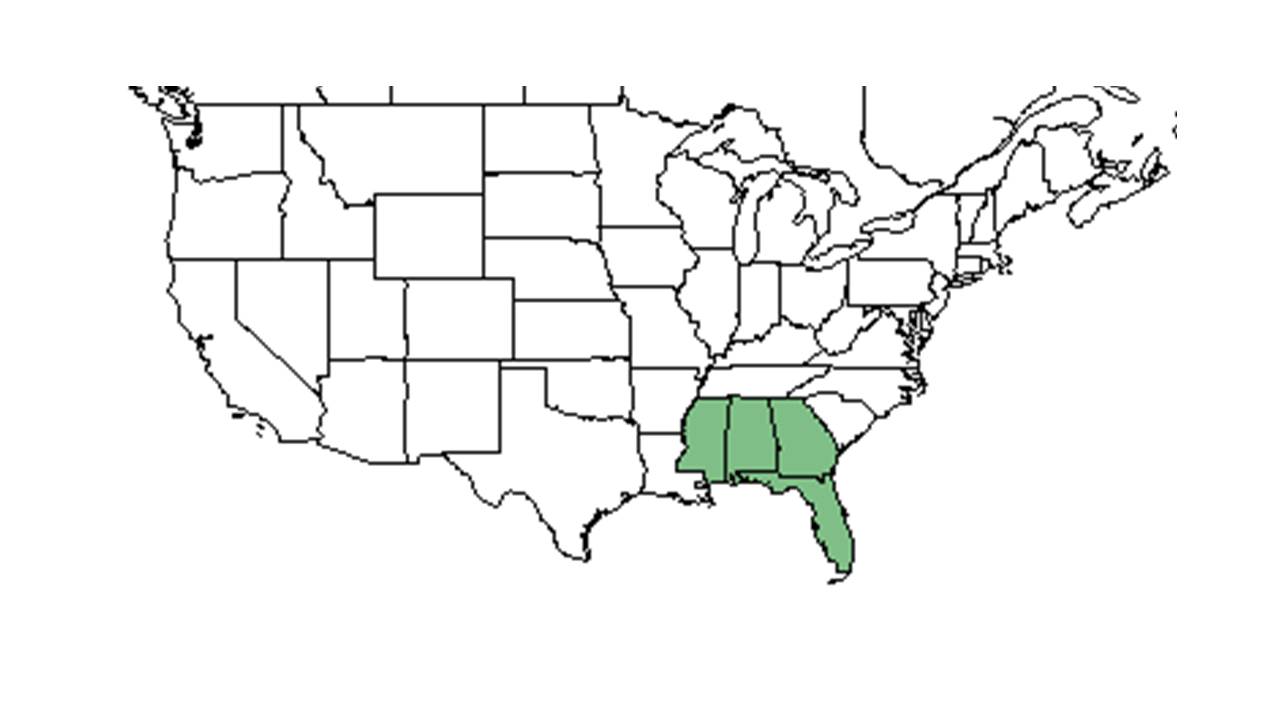Difference between revisions of "Galactia mollis"
KatieMccoy (talk | contribs) |
KatieMccoy (talk | contribs) |
||
| Line 34: | Line 34: | ||
===Phenology=== <!--Timing off flowering, fruiting, seed dispersal, and environmental triggers. Cite PanFlora website if appropriate: http://www.gilnelson.com/PanFlora/ --> | ===Phenology=== <!--Timing off flowering, fruiting, seed dispersal, and environmental triggers. Cite PanFlora website if appropriate: http://www.gilnelson.com/PanFlora/ --> | ||
| − | This species has been observed flowering May through July and fruiting May through October | + | This species has been observed flowering May through July and fruiting May through October<ref name=fsu/>. |
| + | |||
===Seed dispersal=== | ===Seed dispersal=== | ||
According to Kay Kirkman, a plant ecologist, this species disperses by gravity. <ref name="KK"> Kay Kirkman, unpublished data, 2015. </ref> | According to Kay Kirkman, a plant ecologist, this species disperses by gravity. <ref name="KK"> Kay Kirkman, unpublished data, 2015. </ref> | ||
Revision as of 14:45, 3 May 2016
| Galactia mollis | |
|---|---|

| |
| Scientific classification | |
| Kingdom: | Plantae |
| Division: | Magnoliophyta - Flowering plants |
| Class: | Magnoliopsida – Dicotyledons |
| Order: | Fabales |
| Family: | Fabaceae ⁄ Leguminosae |
| Genus: | Galactia |
| Species: | G. mollis |
| Binomial name | |
| Galactia mollis Michx. | |

| |
| Natural range of Galactia mollis from USDA NRCS Plants Database. | |
Common name: soft milkpea
Contents
Taxonomic notes
Description
Generally, the genus Galactia are "trailing or twining, climbing, perennial, herbaceous or woody vines or erect, perennial herbs or rarely shrubs. Leaves 1-pinnate, usually 3-foliolate (or rarely 1-,5-7-,9-folilolate); leaflets entire, petiolulate, stipellate. Racemes axillary, pedunculate with few to numerous, papilionaceous flowers borne solitary or 2-several at a node, ech subtended by a bract and fusion of the 2 uppermost, with the laterals usually shorter than the uppermost and lowermost; petals usually red, purple, pink or white; stamens diadelphous or elsewhere occasionally monadelphous; ovary sessile or shortly stipitate. Legume oblong-linear to linear, few-many seeded, compressed, straight or slightly curbed, dehiscent with often laterally twisting valves."[1]
Specifically, for the species, Galactia mollis, they are "trailing or twining and climbing herbaceous vines with densely spreading short-pubescent stems, to 1.5 m long. Leaves 3-foliolate, rachis 2-8 mm long; leaflets narrowly to widely oblong to elliptic, 2-4 (5) cm long, more or less spreading short-pubescent or pilosulose on both surfaces. Racemes (0.3) 1-2 dm long, with densely spreading pubescent peduncles and rachises, flowers in clusters of 1-3, each cluster on a peduncle 1-3 mm long subtended by a linear-subulate bract ca. 2 mm long; bractlets 1-2 mm long. Calyx densely villous, tube 1.8-2.5 mm long, lobes 3-4.5 mm long; petals red or rose-purple, the standard 7-9 mm long. Legume 2.5-4 cm long and 4.5-5.5 mm broad, densely tomentose." [1]
Distribution
Ecology
Habitat
This species has been found in longleaf pine-wiregrass environments, woodlands, scrub, sandhills, ridges, and moist slopes of pinelands. Primarily found in open areas, it has been observed growing in sandy soils that are dry, loose, drying, deep and/or moist. This species has been found in disturbed areas as well in seepage under powerlines as well[2].
Associated species found growing with Galactia molllis include Rhynchoshia reinformis, Pinus palustris, Aristida stricta, Quercus laevis, Physalis arenicola, Penstemon australis, Phlox nivalis, Stylodon, Rhynchospora, and Panicum[2].
Phenology
This species has been observed flowering May through July and fruiting May through October[2].
Seed dispersal
According to Kay Kirkman, a plant ecologist, this species disperses by gravity. [3]
Conservation and Management
Cultivation and restoration
Photo Gallery
References and notes
Florida State University Robert K. Godfrey Herbarium database. URL: http://herbarium.bio.fsu.edu. Last accessed: June 2014. Collectors: Loran C. Anderson, R. Kral, R.K. Godfrey, R. S. Mitchell, Gwynn W. Ramsey, Harry E. Ahles, J. Haesloop, Wilbur H Duncan, and James W. Hardin. States and Counties: Florida: Clay, Hamilton, Leon, Taylor, Levy, Wakulla, Leon, Suwannee, and Santa Rosa. North Carolina: Cumberland. Georgia: Grady, Baker, Thomas, and Worth.
- ↑ 1.0 1.1 Radford, Albert E., Harry E. Ahles, and C. Ritchie Bell. Manual of the Vascular Flora of the Carolinas. 1964, 1968. The University of North Carolina Press. Print.
- ↑ 2.0 2.1 2.2 lorida State University Robert K. Godfrey Herbarium database. URL: http://herbarium.bio.fsu.edu. Last accessed: June 2014. Collectors: Loran C. Anderson, R. Kral, R.K. Godfrey, R. S. Mitchell, Gwynn W. Ramsey, Harry E. Ahles, J. Haesloop, Wilbur H Duncan, and James W. Hardin. States and Counties: Florida: Clay, Hamilton, Leon, Taylor, Levy, Wakulla, Leon, Suwannee, and Santa Rosa. North Carolina: Cumberland. Georgia: Grady, Baker, Thomas, and Worth.
- ↑ Kay Kirkman, unpublished data, 2015.